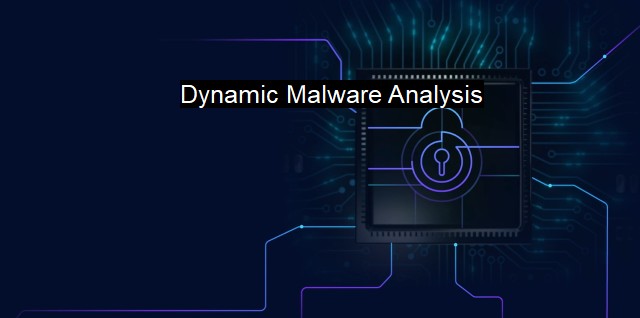What are Dynamic Malware Analysis?
Enhancing Cybersecurity with Dynamic Malware Analysis: Unveiling the Intent and Impact of Malicious Software Variants
Dynamic malware analysis is a critical technique in the cybersecurity world and a vital tool used in antivirus software. It is a sufficiently advanced procedure used in assessing the potential threats that conceal themselves as benign elements whenever subjected to static malware analysis. Using this technology, different organizations would identify, quarantine, and eliminate threats by weighing the potential risks involved.To appreciate the necessity of dynamic malware analysis, we need to understand the limitations of static malware analysis. Static malware analysis involves studying the malware without running it. It includes reviewing the strings, disassembling the constructed codes, and searching for suspicious artifacts that indict the malware. many technologically advanced malwares are engineered to be dormant whenever tested under static malware analysis. some stealth malware carries additional code aimed at confounding static analysis techniques.
This is where dynamic analysis comes into play. Dynamic malware analysis entails executing the malware and monitoring its behavior to determine its complete profile or "footprint". This hands-on approach to malware study humanizes the decoding process by asking what the malware is acting to produce, what unfamiliar registry keys have been generated, or what endorsement connections have been established – thereby revealing its true nature.
To give an insight beyond just strings or metadata, dynamic analysis offers real-time visibility into the file's behaviors and its interactions with the system to nail down its capabilities, characteristics, and intent. All these provide a better understanding of how the malware works. Cybersecurity professionals gain access to essential information counted on to develop robust security strategies in combating the menace.
In dynamic malware analysis, cybersecurity experts use an isolated environment often referred to as a sandbox, equipped with extensive tools that record memory snapshots, run packet captures, log application activities, and other functions that improve their behavioral analysis. it gives direct insights into the freighted activities of the malware, like data exfiltration, making it difficult for the code to hide its actions.
Malware created by resourceful attackers might still exhibit subtle evasion strategies to pollute dynamic analysis or create environmental noise. These inconspicuous ploys include anti-dissection methods to confuse analysts, obscure key data, or test for commonplace analysis environments like sandboxes. Unveiling such deceptions is an ongoing procedural challenge for dynamic analysis, something that must be overcome through continuous improvements and forefront anomaly detection techniques.
It's also essential to remember that no one technique is sufficient against the wide variety of malwares in existence. Instead, a combination of the scrutiny of static analysis and the hands-on demonstration of dynamic analysis often produces the best insights.
Dynamic malware analysis is an inherent part of cybersecurity and antivirus operations, uncovering deeper implications and providing visually realistic details unattainable from simple superficial analysis. As malware strains continue to evolve and become more complex, the tools, techniques, and practices revolving around dynamic malware analysis will need to improve and revolutionize, with a view to having a constant up-to-date array of defense strategies against potential threats.

Dynamic Malware Analysis FAQs
What is dynamic malware analysis?
Dynamic malware analysis is a cybersecurity technique that involves analyzing malware in a controlled environment to understand its behavior and actions. This involves running the malware in a virtual machine or sandbox and observing its interactions with the system.Why is dynamic malware analysis important for antivirus?
Dynamic malware analysis is important for antivirus because it helps detect and identify new and unknown malware. Antivirus software can use the information gathered from dynamic analysis to update its signature database and better protect against future malware threats.What are the benefits of using dynamic malware analysis?
The benefits of using dynamic malware analysis include identifying new and unknown malware, discovering malware behavior and actions, and improving threat intelligence. It can also help improve the accuracy and effectiveness of antivirus software.What are the limitations of dynamic malware analysis?
The limitations of dynamic malware analysis include the possibility of false positives or false negatives, as well as the time and resources required to perform a thorough analysis. Additionally, some malware may be designed to evade dynamic analysis techniques, making it more difficult to detect and analyze.| | A | | | B | | | C | | | D | | | E | | | F | | | G | | | H | | | I | | | J | | | K | | | L | | | M | |
| | N | | | O | | | P | | | Q | | | R | | | S | | | T | | | U | | | V | | | W | | | X | | | Y | | | Z | |
| | 1 | | | 2 | | | 3 | | | 4 | | | 7 | | | 8 | | |||||||